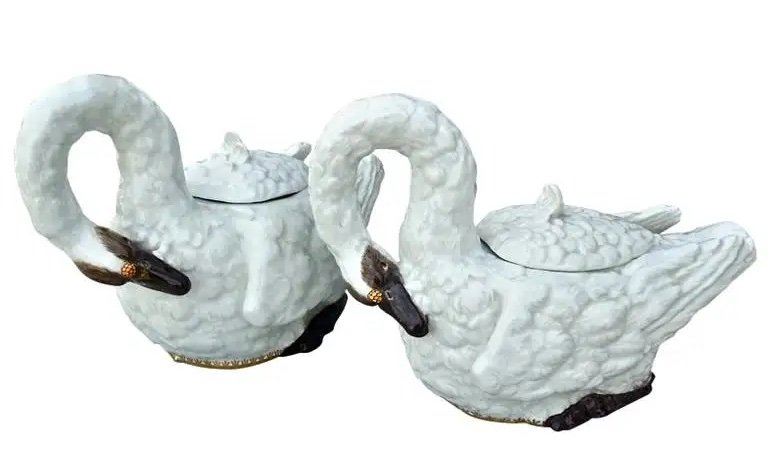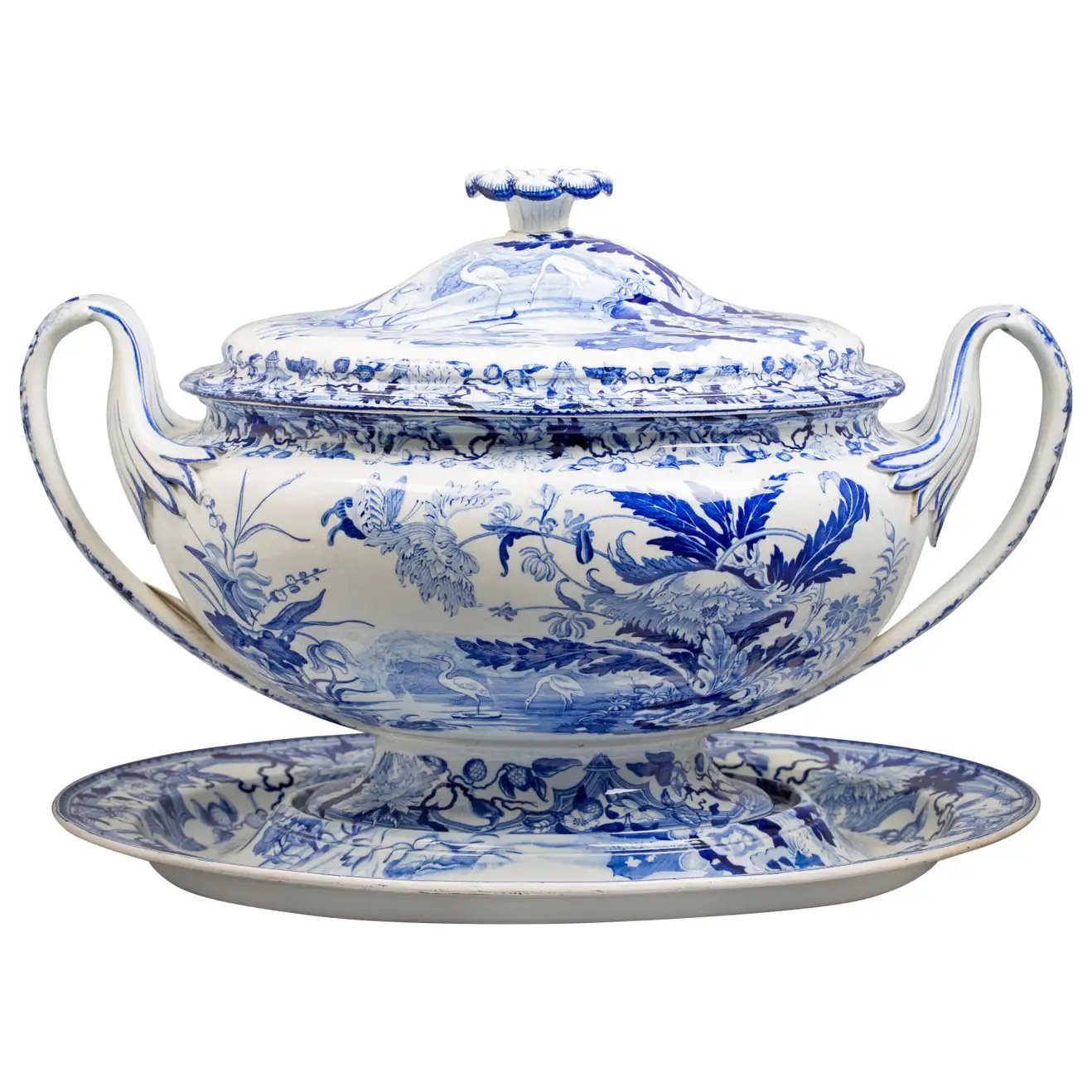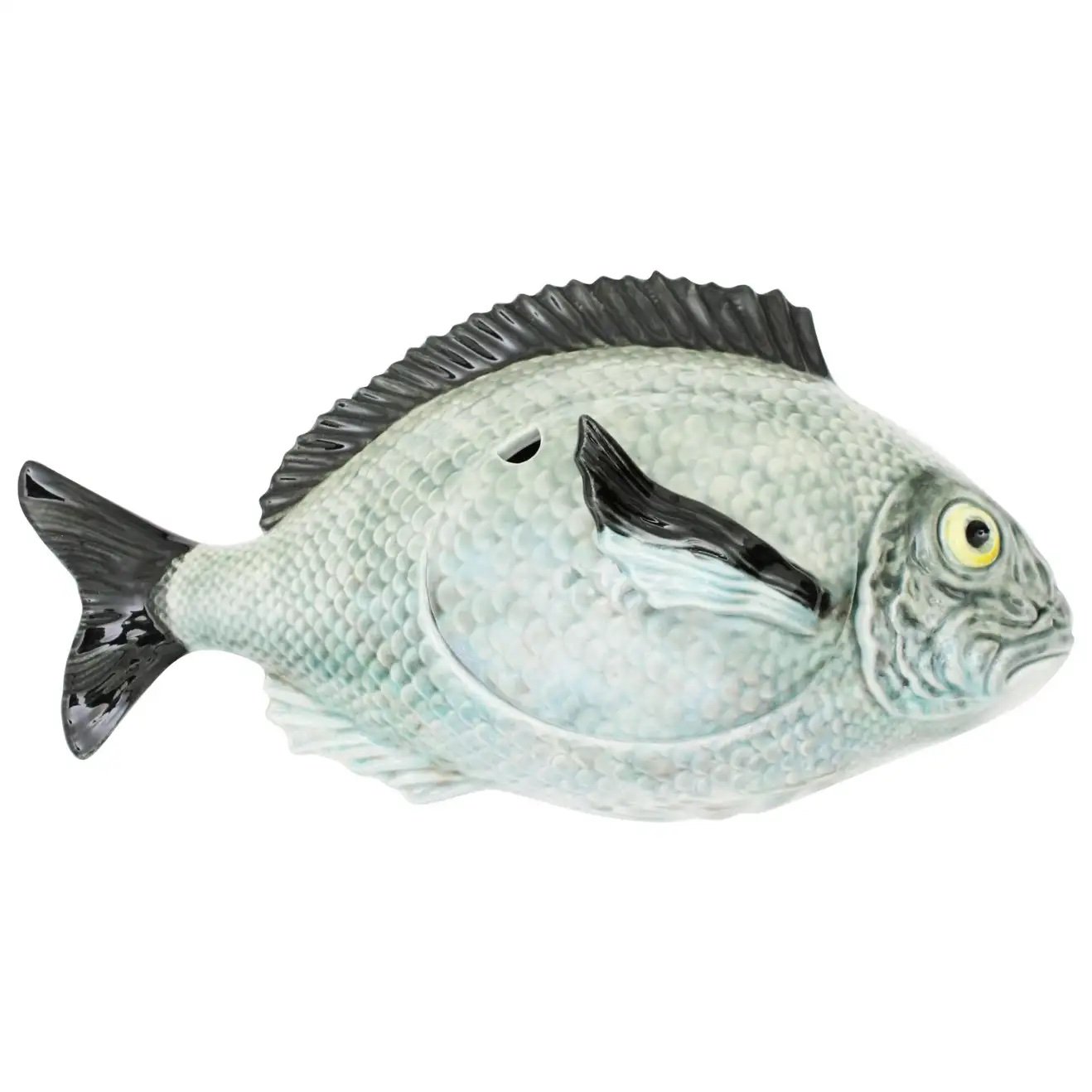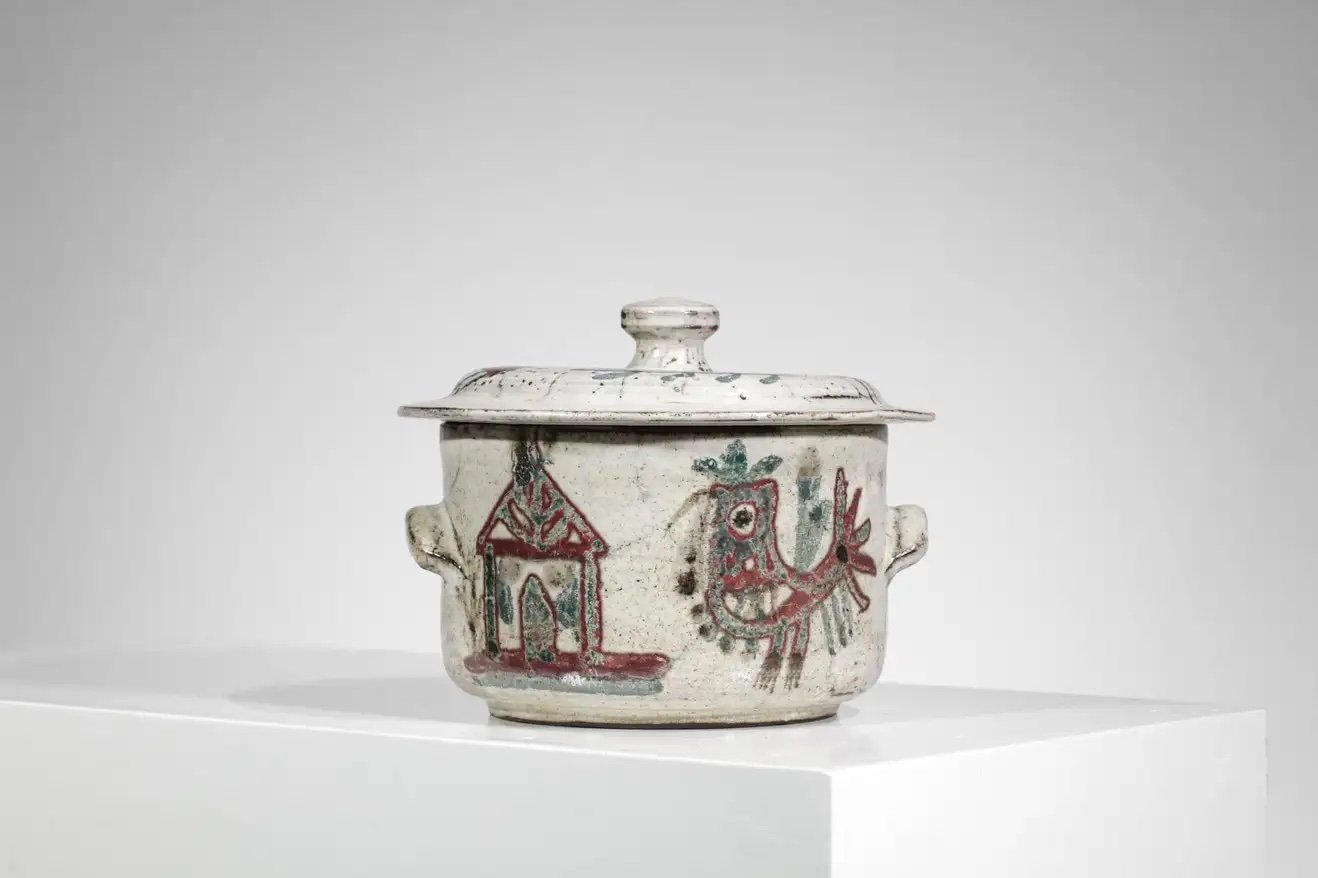Makers from Meissen to Cindy Sherman Bring Whimsy to your Winter Table
Winter is the season of soups and stews, and it offers the perfect excuse to enjoy a particularly fanciful piece of tableware: the tureen.
As published in 1stDibs, February 11, 2022
Contemporary photographer Cindy Sherman worked with the Ancienne Manufacture Royale de Limoges to produce this 1990 tureen featuring a portrait of Sherman dressed as 18th-century courtier and tastemaker Madame de Pompadour.
Not to be confused with a tagine or a terrine — though they’re also lidded vessels — tureens have been among the brightest stars of a luxuriously appointed table since the 17th century. Their unusual combination of practicality and artistic flourish make them desirable to collectors and home chefs alike.
The word tureen first appeared in English at the beginning of the 18th century, derived from the French terrine, meaning “earthen vessel” (from the Latin terra meaning “earth”), as they were made from clay. These large covered dishes kept soups and stews warm at the table and made it possible to serve guests elegantly with minimal fuss.
Renowned German porcelain maker Meissen created this pair of swans in the late 18th or early 19th century.
One legend about the origin of the term claims that the 17th-century French military leader the Vicomte de Turenne used his helmet as an improvised soup bowl on the battlefield. But it’s more likely that the word and the form gradually gained popularity because the piece served its two functions so well: It streamlined the presentation and service of a somewhat unwieldy food, and it gave hosts a new canvas on which to display their good taste and refinement.
This 1784 vessel by French silversmith Jean-Baptiste-François Chéret is topped with an elegant bunch of carrots, celery and cauliflower.
Tureens proliferated in Great Britain and North America in the 18th century, thanks in large part to the culinary influence of France. King Louis XIV (1638–1715) was quite fond of savory soups and stews. During his reign, the French court employed a form of dining known, naturally, as service à la française, in which all the meal’s courses are brought to the table simultaneously.
This method — which was replaced by the stepwise service à la russe in the 19th century — necessitates temperature control, and tureens kept their contents warm while also dazzling courtiers with their exquisite exteriors. For elaborate meals, smaller tureens were used for sauces, mustards and other accompaniments, adding to the visual spectacle.
These 19th-century English tureens were produced by makers Flight, Barr & Barr (left) and Wedgwood (right).
So, is soup inherently glamorous? Or is it the tureen that transforms a table setting? Ann Wagner, curator of decorative arts at the Winterthur Museum, Garden & Library, home to the Campbell Collection of Soup Tureens, says that to understand the vessels’ appeal, we should see them as parts of an elaborate whole.
“I think for the tureens of the era encompassed by the Campbell Collection at Winterthur [1720 to the present], the big story is not what was inside, despite every chef’s best efforts,” Wagner tells The Study.
“A tureen of this era should never be viewed alone but as a focal point amidst a display of ornamented functional table service items,” she explains. “These have included serving vessels, candle lighting and flatware, which also contributed reflective metals, colorfully glazed or gilded imagery and beautifully modeled sculptural elements to the dining experience.”
Tiffany & Co. created a number of tureens in the neoclassical style, such as this early-20th-century piece.
In metal, earthenware or porcelain, tureens can take almost any form, from a duck with impressive plumage to a round cauliflower, and incorporate a variety of motifs, including fierce mythological creatures.
In addition to such traditional makers as Meissen, Nymphenburg and Tiffany, contemporary artists and designers have embraced the form.
Some of the most whimsical dishes have realistic shapes, like this ca. 1765 faience cabbage and 1950s Majolica fish.
Photographer Cindy Sherman, for one, collaborated with the Ancienne Manufacture Royale de Limoges (part of Bernardaud since the 1980s) to produce her 1990 series Madame de Pompadour (née Poisson).
The collection comprises limited-edition porcelain pieces modeled on those made for Madame de Pompadour herself in 1756, including tureens. The artist’s iterations echo the forms, colors and decorations of the source material, with the addition of self-portraits of Sherman dressed as Pompadour, Louis XV’s chief mistress.
Mid-century French artisan Gustave Reynaud of Atelier le Mûrier was known for his earthy ceramics, like this 1960s tureen.
It makes sense that artists are drawn to tureens: In their original context, the dining table was akin to a pedestal in a gallery.
“In a wealthy household, the buffet was a showy exhibit of virtuoso vases, vessels and plates placed solely to impress guests rather than to feed them,” says Wagner. “This cultural practice seems to linger on our tables with tureens, although most of us don’t have 450-piece dining services to accompany them.” But to bring cheer to a mid-winter meal, a tureen is a good place to start.









